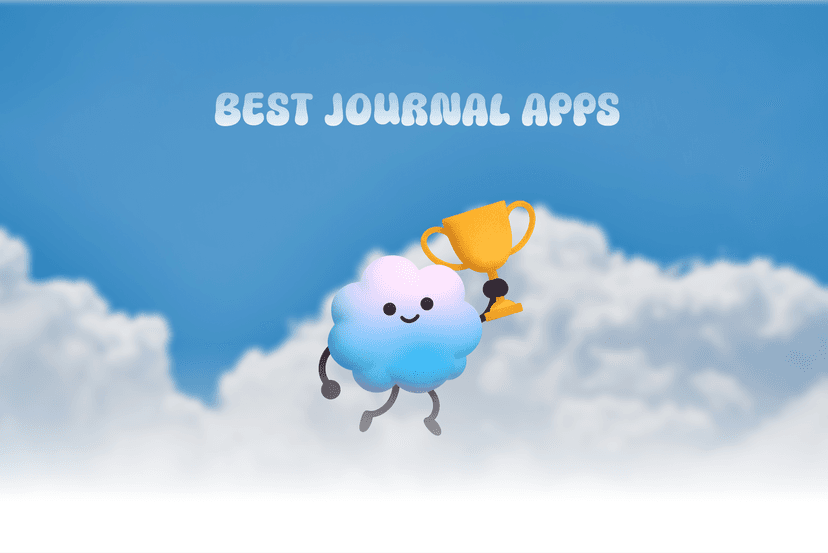Why You Keep Quitting Journaling (And How to Finally Make It Stick)
Imagine the scenario:
You buy a new journal. The kind with a leather-bound cover and inviting pages.
Motivated, you write in it for three days straight!
Then life gets busy, and the journal sits on your nightstand, gathering dust alongside a thin layer of guilt.
A few months later, inspired by another article on the benefits of journaling, the cycle repeats.
Sound familiar? You're not alone.
Most people quit their journaling habit not due to a lack of desire, but because they encounter predictable—and solvable—roadblocks. The good news is that building a lasting journaling routine isn't about willpower. It's about strategy, understanding a bit of human psychology, and using the right tools that help to stay consistent.
Whether you're aiming to boost productivity, achieve greater self-awareness, or find a healthy outlet for your thoughts, this guide will show you how to avoid inconsistencies and make your journaling habit stick.
Understanding Common Roadblocks in Journaling
Before we build a new habit, we must understand what breaks the old one. Most journalers fall into one of three common traps.
1. The Productivity Paradox: Dispelling the "Lack of Time" Myth
The most common excuse for quitting is "I don't have time." But this is a classic productivity paradox. Research and stories from long-time journalers reveal that the daily journaling habit actually creates more focused, productive time. As one diarist since 1997 shares, journaling helps prioritize tasks and organize life.
The issue isn't a lack of time; it's the perception that journaling must be lengthy and time-consuming. The solution lies in reframing the task.
2. Overcoming Blank Page Paralysis: Journaling Prompts for Beginners
Staring at a blank page can be overwhelming due to the pressure to both write something in the first place but also to write something profound. This is "blank page paralysis," stopping many habits before they start.
The key is to lower the stakes. You don't need to write a masterpiece or a full paragraph. Start by setting a timer for two minutes and writing whatever comes to mind. Use structured journaling prompts like the "rose, bud, thorn" method:
- •Rose: A positive moment from your day.
- •Bud: Something you're looking forward to.
- •Thorn: A challenge you faced.
This simple framework reduces guesswork and starts the words flowing. Start with that. (Also at ABY we have buuuunch of templates you can use to do 1-minute guided journaling.)
3. The Inconsistency Trap: How to Avoid Falling Behind
Missed a day? Then two? Soon, opening your journal triggers guilt. This all-or-nothing mindset is the enemy of long-term behavior change.
Comedian Jerry Seinfeld used a simple system to build his joke-writing habit: a large wall calendar and a red marker. For each day he wrote, he put a big red "X" on that date. "After a few days you'll have a chain," he said. "Just keep at it and the chain will grow." This visual reward shifts focus from perfection to consistency, emphasizing not breaking the chain today. For you it can be a calendar, but also a mood tracker built into many journaling apps. It really helps to visualize progress.
The Psychology Behind Habit Formation and Accountability
Building a journaling habit is a classic exercise in behavior change. Understanding the science behind it can give you an unstoppable advantage.
Unlocking Habit Formation: Habit Stacking Techniques
One effective principle is "habit stacking," coined by behavior expert James Clear in his book "Atomic Habits." The idea is to link a new habit to something you already do automatically.
Do you drink coffee every morning? That's your cue. Place your journal and a pen next to your coffee maker. The rule: You can't have coffee until you've written one sentence. Or: You need to have two sentences written before you finish your coffee. As it goes for me, I always write in my journal when I go for an evening walk to a part. It's part of my wind down routine. By linking journaling to established rituals, you eliminate the need for motivation and make it an automatic behavior.
The Role of Accountability: Tools and Techniques for Success
Simply telling someone about your goal can increase your success rate. Find a friend to be your accountability partner. You don't need to share private entries; just check in: "Did you journal today?" This small act makes the commitment real.
Ok, I know that for some having a friend who is reliable enough might be a barrier itself so you can just get ABY to be your companion in that journey.
Digital habit trackers serve as great accountability tools, creating a "don't break the chain" effect on your phone. (And ABY will always send a cute message tailored to you.)
Harnessing Motivation: Intrinsic vs. Extrinsic Rewards
To stay consistent, know your "why." Connecting with your deeper motivation is crucial. Do you want to reduce anxiety? Improve memory? Boost productivity? Write your "why" on a sticky note on your journal's cover. Review it each time you open your journal.
This is your intrinsic motivation—the internal reward of clarity and well-being. But don't underestimate extrinsic rewards—the external progress validation. This is where a streak counter in an app or a calendar chain provides motivation.
Using AI to Enhance Your Journaling Experience
While traditional methods are powerful, modern technology offers new ways to overcome old challenges. An AI journaling assistant can act as a personalized guide, reducing the friction that causes quitting.
Honestly, for me journaling was tough (and frankly pointless) because it didn’t provide immediate value of insights. Or if I wanted that, I had to resort to reading my entries and trying to make sense of it all.
Now, it’s much much easier thanks to smart companions.
How AI-Driven Prompts Can Spark Creativity
A smart journaling app doesn't just offer generic prompts; it learns what resonates with you. It offers intelligent prompts tailored to your entries, goals, or even calendar events. Imagine opening your journal app and seeing: "How do you feel about tomorrow's presentation? What can make you feel more prepared?" With that blank page paralysis fades.
Real-Time Insights and Progress Tracking: Motivation with AI
This is where an AI journaling companion truly shines. With your permission, it analyzes entries over time, identifying recurring themes, mood patterns, and sentiment shifts. It shows, with data, how your outlook improves, connecting actions to well-being, creating a feedback loop of motivation. So you can see actual patterns that emerge in your behavior and work on them—great addition to therapy or just standalone self-improvement.
Reducing Friction: Integrating Technolgy Seamlessly
The best habit is one you don't think about. An smart journal integrates seamlessly into life. Use speech-to-text for on-the-go thoughts. Get reminders at the best writing time. App like that helps you build a consistent journaling habit without relying solely on discipline.
Final Thoughts: How to Start—Small Steps, Big Impact
If the idea of filling a page feels daunting, go smaller—much smaller.
Micro-Journaling: What and Why
Micro-journaling is writing one or two sentences a day—an achievable goal. It takes less than 60 seconds, dismantling the "no time" excuse. This low-pressure entry point prioritizes showing up over volume, forming a lasting habit foundation.
Crafting Effective Micro-Journaling Sessions: Key Tips
In one minute, you can:
- •Write down one thing you're grateful for.
- •Note something that made you smile.
- •Answer: "How do I feel right now?"
The content matters less than the consistency. The aim is to open the book (or app) and write something. Often, a sentence leads to more.
Long-Term Benefits: How One Minute Transforms Productivity and Wellness
It may not feel like much, but one minute a day compounds. Over time, you build an invaluable life archive, create mindfulness moments calming the mind, sharpening focus, and fostering self-awareness. This small, consistent action drives monumental behavior change, enhancing both productivity and well-being.
Don't aim for a perfect journaling practice.
Aim for a consistent one.
Start small. Stack habits. Find your "why.”
And lean on modern tools to ease the process.
The most profound insights await on the other side of consistency.
And soon enough you’ll see A Better You.
Stay in the know
Receive thoughtful insights on mindful living, delivered with intention.
Continue Your Journey
More reflections to inspire your path



